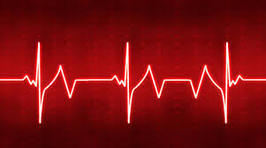C is for CPR Certification
 I had never witnessed a heart attack until Monday night. But now that I have, the memory and the questions will never leave me.
I had never witnessed a heart attack until Monday night. But now that I have, the memory and the questions will never leave me. We were at the lake, on his boat, watching old Westerns as we have so many times before. He seemed distant, so I asked if he’d had his daily nap. He smiled and shook his head “no.” Five minutes later, he slumped over on the couch. Another friend and I tried to rouse him and get a response to no avail.
“Get an aspirin,” the other man yelled. I ransacked cabinets, searching, finding them, realizing he couldn’t swallow.
“Do you know CPR?” I asked.
“No,” he answered, “Do you?”
“No.” I knew the basics of what I’d learned in Girl Scouts years ago and seen on medical shows, but no, I did not definitively know CPR. “Call 9-1-1. They’ll walk us through it.”
I got my husband from where he was working on the back deck. He ran inside. We moved the victim to the floor. The instruction began and Frank started CPR, but five minutes had passed. Five minutes is too long. It took another excruciating fifteen for the ambulance to arrive from the nearest small town. My friend is now in critical care breathing with the assistance of a respirator while his family struggles with the decision of whether or not to remove him from life support because of the time his brain was devoid of oxygen.
In the wake of this event, yesterday’s blog was trite and ridiculous, but after attempting and attempting to pen a post, I just gave up and pulled a poem that was written five years ago. Every time I tried to think of a “B” word, the only one that came to mind was “Breathe.” Breathe, breathe, please, breath—what we had begged him to do. Now, breathe, breathe—what the medics had advised Frank to do between compressions. Breathe, just breathe—what I had to remind myself to do all day yesterday.
I spent Monday into the wee hours scouring the internet for information and hope. What I found was that there are conflicting studies on how CPR should be performed—some propose a compression/breath combination and others a hands-only compression. Though not every site agrees on the method, all, including the Sarver Heart Center, agree that you should "Just do your best. If you do nothing, the person is likely to die. Studies have shown that there is almost no chance that you will hurt the person. While it is rare that a rib will be broken during CPR, doctors are able to repair broken ribs, but they cannot repair death."
There are many articles, including “Un-extraordinary measures: Stats show CPR often Falls Flat” from CNN, on the low efficacy of CPR and its influence on survival. But for me, even if the statistics are not in my favor, I want to have the knowledge and confidence to do everything within my power to give a person the chance to be part of the winning percentage.
I will forever wonder if things might have turned out differently if I had been able to administer CPR immediately. I never want to feel that helpless, scared, and ignorant again. Nor, do I ever want anyone else to feel that way. So, below, I have included links to videos on how to properly perform CPR and where to find classes in your region.
Video: Watch Hands-Only CPR in Action
Video: Adult CPR
American Red Cross Class Schedule
 Welcome to my words, as I attempt to complete the Blogging from A-Z April Challenge. Wish me luck and join me for your daily dose of Bourbonista madness.
Welcome to my words, as I attempt to complete the Blogging from A-Z April Challenge. Wish me luck and join me for your daily dose of Bourbonista madness.
Published on April 03, 2014 06:55
No comments have been added yet.



